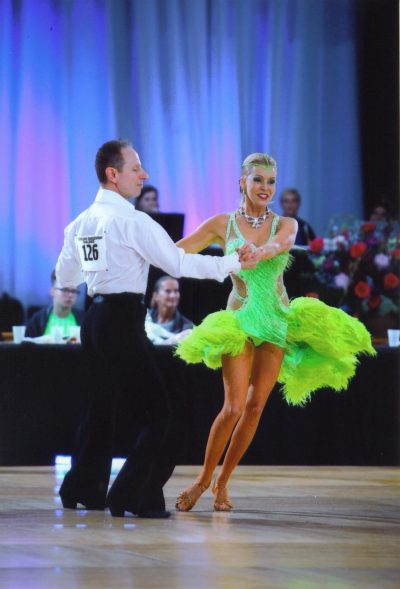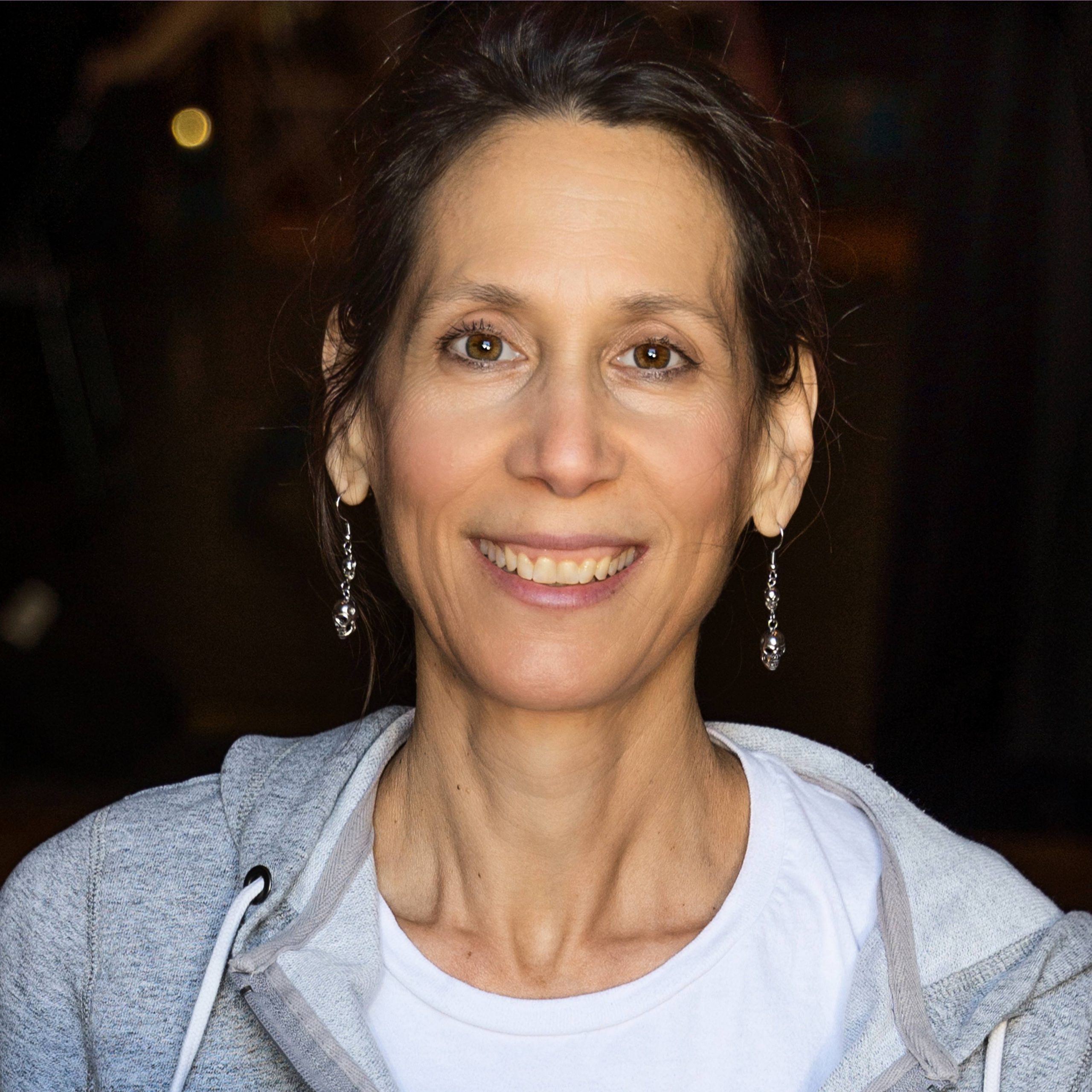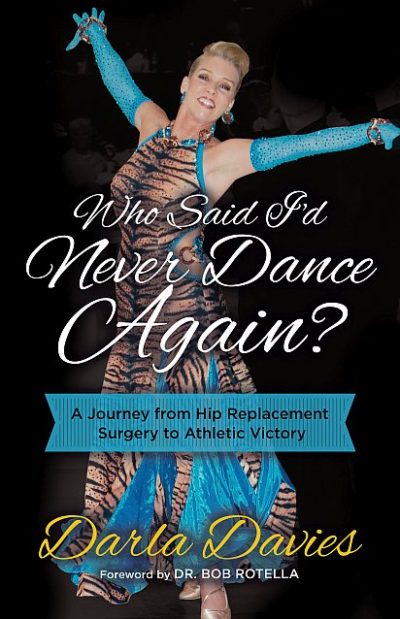Darla Davies’ journey to ballroom dance champion after hip replacement surgery
[ad_1]
From surgery to superstar
The title of a memoir from ballroom champion Darla Davies, “Who Said I’d Never Dance Again?” is a question not far from any dancer’s mind whenever they have an injury.
But for Darla Davies, it was an unnamed orthopedist she calls Dr. Wise because he so clearly wasn’t. He told her if she had hip replacement surgery, she would never dance again.
First, that’s quite an arrogant declaration!
Second of all, for a competitive ballroom dancer, there is no greater motivation than a challenge like that. Davies did indeed dance again after her surgery – all the way to Pro Am champion!
Darla Davies’ story begins not with dance, but with horses. Much like dancing, which appears effortless and graceful to the untrained eye, riding horses looks deceptively simple yet requires a tremendous amount of leg and torso strength, balance and consistent effort. After twenty-five years, burned out from the daily grind and with osteoarthritis pain creeping up on her, Darla left what she calls the “horsey” life and discovered both her husband and ballroom dancing, not necessarily in that order.

A gifted athlete who also enjoyed and excelled at tennis and golf, Davies picked up dance very quickly. As a natural competitor, she found the ballroom dance world enticing. Her future husband, Jim Maranto, was a two-time United States Professional American Smooth Ballroom Dance Champion when they met, and he became her partner in Pro Am competitions. Davies progressed from beginner to advanced competitions in less than five years.
The pain she had while riding, unfortunately, also progressed quickly. Her normal routine of Epsom salt soaks and topical pain relievers were no longer enough to curb her pain. In the book, Davies describes the movements necessary to perform certain dance styles such as Rhythm and Latin, movements that place exceptional strain on the legs and hips. Many ballet and modern dancers will recognize the similarities of certain steps and the physical efforts necessary to perform them.
She turned to Rolfing for some relief.
Note: “Named after its founder, Dr. Ida P. Rolf, Rolfing® Structural Integration is a form of bodywork that reorganizes the connective tissues, called fascia, that permeate the entire body.” (from the website, Rolfing.org)
Alas, the intensity of the hands-on bodywork did not alleviate her pain.
She turned to a chiropractor next.
For those unfamiliar with it: “Chiropractic is a form of alternative medicine mostly concerned with the diagnosis and treatment of mechanical disorders of the musculoskeletal system, especially the spine….The main chiropractic treatment technique involves manual therapy, especially spinal manipulation therapy (SMT), and manipulations of other joints and soft tissues.” (from Wikipedia)
Still no relief from the pain.
Davies tried acupuncture as a final non-surgical resort.
From the Mayo Clinic’s website: “Acupuncture involves the insertion of very thin needles through your skin at strategic points on your body. A key component of traditional Chinese medicine, acupuncture is most commonly used to treat pain.”
It was not a magic cure for Davies, although it was “a few hours of nice music and relaxation.” (Davies, p.6)
She also tried physical therapy and HYALGAN® injections, none of which offered any lasting relief from the pain.

Although Davies downplays these treatments in just a few pages, it’s important to know everything she went through so a reader understands it wasn’t a rash decision on her part to have hip replacement surgery. As she details the path she took, the consultations she had with various doctors, a reader will empathize with the feedback (and in some instances, pushback) she received from not just professionals but also friends – even after her surgery. One friend bluntly questioned her determination to become a dance champion again to which Davies replied, “The butterfly with the broken wing will fly twice as high,” a phrase which would become her mantra (p. 70) during her recovery and especially when faced with adversaries.
Davies spends much of her book detailing the recovery process, both physical and mental, after the surgery. All of this insight is incredibly helpful to dancers who are concerned about what will happen to them if they have this surgery.
What sets Davies’ memoir apart from more traditional “recovery” stories and makes this book relatable for athletes and for dancers who are not in the ballroom world are two things:
Darla’s Tips – her advice at the end of each chapter that addresses various issues readers might be experiencing, such as tips for patients in pain, questions to ask a professional, how to set rehabilitation goals and more.
Inspirational Tales – she relates the personal stories of celebrity athletes and dancers who went on to great heights within their fields, such as Wayne Sleep of the Royal Ballet, figure skater Rudy Galindo, and swimmer Diana Nyad.
The individual stories of more famous people fall into two categories: those who went through the hip replacement surgery successfully and those who are mature athletes. Reading about all of these people, even if they are not in the dance world, is tremendously inspirational. Davies studied sports psychology and believes dancers should take from it the lessons inherent in playing the “mental game.” Sports – and dance – is not just a physical game but a mental one and getting “outside your head” is critical to becoming a top athlete.
Believe that another victory is coming your way.
Author bio: Darla Davies is the only competitive athlete and ballroom dancer who, in less than three years, claimed the United States
To purchase Darla Davies’ memoir, visit her page at Amazon.
Ways to connect with the author:
Website: www.MyDancingHips.com
Facebook: www.facebook.com/AuthorDarlaDavies
Instagram: www.instagram.com/AuthorDarlaDavies
Kindly follow, like or share:

Leigh Purtill is a ballet instructor and choreographer in Los Angeles where she lives with her husband and charming poodle. She received her master’s degree in Film Production from Boston University and her bachelor’s in Anthropology and Dance from Mount Holyoke College. She is the author of four young adult novels from Penguin and HarperCollins. She is the artistic director of the Leigh Purtill Ballet Company, a nonprofit amateur ballet company for adults and she teaches ballet and jazz to adults both in person and online, Leigh Purtill Ballet. Read Leigh’s posts.
[ad_2]


















